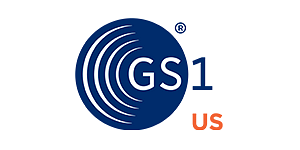Keeping track of product information and inventory with multiple barcode types can be tricky for businesses.
Gena Morgan, who leads the standards team at GS1 US, shares valuable insights into the world of barcodes, specifically focusing on the transition from traditional 1D barcodes to 2D barcodes and the importance of GS1 standards in driving industry adoption. Gena explains the technical differences between traditional linear barcodes and 2D barcodes, such as QR codes and GS1 DataMatrix, highlighting the increased data capacity and smaller footprint of 2D barcodes.
She elaborates on the potential consumer and business benefits, emphasizing the ability of 2D barcodes to provide more accurate and direct information to consumers, streamline supply chain processes for brands and retailers, and enable functionalities such as product recalls and promotions. The discussion delves into the challenges and opportunities presented by the transition to 2D barcodes, as well as the support and resources available for brands looking to embark on this journey. Gena's expertise on the subject makes for an enlightening and informative conversation, encouraging businesses to consider the advantages of 2D barcodes and GS1 standards in their operations.
Key takeaways:
-
The transition from traditional barcodes to 2D barcodes allows brands to provide information to consumers and tailor experiences.
-
The adoption of 2D barcodes in the industry allows products to carry more data in a smaller footprint.
-
GS1 US supports brands transitioning to 2D barcodes and GS1 digital link standards with pilot programs and toolkits.
Connect with GS1 US:
Our website - www.gs1us.org
Connect with guest:
Resources:
Resources for the Transition from 1D to 2D Barcodes
Fresenius Kabi Infuses Safety from Production to Patient with Unit-of-Use 2D Barcodes



